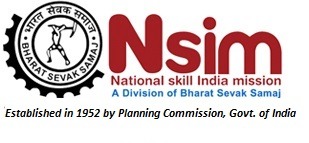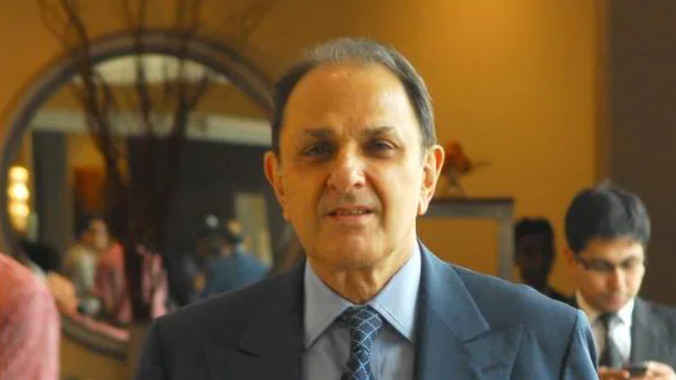Stories you may like
Nusli Wadia vs Dhirubhai Ambani business war
The Nusli Wadia vs. Dhirubhai Ambani rivalry is one of the most famous business battles in India’s corporate history, often described as a war between Bombay Dyeing (Wadia Group) and Reliance Industries (Ambani Group) during the late 1970s and 1980s.
Here are the main reasons behind their business war:
1. Textile Industry Rivalry
-
Nusli Wadia’s Bombay Dyeing was one of India’s most established textile giants, known for quality and brand reputation.
-
Dhirubhai Ambani, with Reliance, was a rising challenger who disrupted the market with cheaper, mass-produced polyester.
-
Reliance’s aggressive pricing and large-scale production threatened Bombay Dyeing’s dominance in textiles.
2. Traditional vs. New-Age Approach
-
Wadia represented old money (legacy business families with conservative approaches).
-
Ambani represented new-age entrepreneurship, using aggressive expansion, financial engineering, and political connections.
-
This clash of ideologies intensified the rivalry.
3. Stock Market Battles
-
Ambani mastered the art of using the stock market to raise capital, attract investors, and fuel growth.
-
Reliance shares became extremely popular among small investors, while Bombay Dyeing remained a more traditional company.
-
Wadia accused Ambani of manipulating markets and bending rules, leading to several high-profile clashes.
4. Government & Political Influence
-
Ambani had strong political connections, especially with the Congress government, helping him secure licenses, quotas, and policy advantages.
-
Wadia, on the other hand, was aligned with political figures opposing Ambani’s influence.
-
This policy war deepened the rivalry, as Wadia accused Ambani of exploiting the "License Raj" system.
5. The Polyester War
-
Reliance introduced synthetic fibers (polyester) and promoted them as the “fabric of the future.”
-
Bombay Dyeing, rooted in traditional cotton textiles, resisted the polyester wave initially.
-
Ambani’s polyester success disrupted Bombay Dyeing’s market, sparking a direct war in the textile sector.
6. Corporate Espionage & Allegations
-
The rivalry wasn’t just in boardrooms—it spilled into the media and politics.
-
There were allegations of espionage, lobbying, and smear campaigns against each other.
-
Wadia was openly critical of Reliance’s methods, while Ambani continued his expansion relentlessly.
7. Media Battles
-
Wadia used publications like The Indian Express (edited by Arun Shourie) to criticize Ambani’s practices.
-
Reliance, in turn, used its influence to counter these attacks.
-
This made the rivalry very public—India’s business war was being fought in newspapers.
Why Wadia Fights Everyones Battles
There is nothing Wadia loves more than a fight especially one that has nothing to do with him. They say that a man is known by the company he keeps. In the case of Nusli Wadia, he is also known by the companies and people he fights. Look at the list:
He fought his own father when Neville Wadia sold Bombay Dyeing to RP Goenka in the 1970s; Nusli wanted to keep his inheritance and mustered support from his officers, the trade unions, other members of his family and (you guessed it) JRD Tata.
He has fought Dhirubhai Ambani and Reliance Industries in a series of neverending scraps that consumed both the media and the government of the day. His chief media protagonist was of course Ram Nath Goenkas Indian Express.
And he has fought virtually every Tata satrap when Bombay House had tired of him: Russi Mody, Darbari Seth and now Ajit Kerkar.
He also fought Rajan Pillai in Britannia Industries, on behalf of Danone, the French foods giant. And he fought Nani Palkhivala when he felt that Palkhivala had stymied his bid for control of the Associated Cement Companies, taking the matter to court.
Then he fought the Securities and Exchange Board of India (Sebi) when it ruled against a takeover offer he made for a company in Gujarat.
Why, he even fought Rajiv Gandhi, getting enmeshed in all manner of shenanigans (when the enforcement directorate engaged the Fairfax investigating agency, many suspected Wadia had something to do with determining how Fairfax was paid).
Nusli Wadia, 54, and still full of fight, loves nothing more than a fight. While other businessmen shun the arc lights, and do everything possible to avoid conflict with the government, Wadia clearly loves a good brawl. Especially if it has nothing to do with him. So when there was civil war in Indian Express, he sided with Vivek Goenka and fought Manoj Sonthalia. (It is ironic that today Goenka is seen as being closer to arch-foe Ambani, while Wadia is aligned with Sonthalia.)
The common theory is that Wadia is bored by the nitty-gritty of business, and would much rather leave it to a chief executive or (as now) to a bunch of consultants. If he gets involved in detail, it is when business has the flavour of a fight like a takeover bid.
Oddly though, Wadia has a singularly unsuccessful track record on takeover bids he bid for Union Carbide but was beaten comprehensively in that game by B M Khaitan. His other takeover bids have got nowhere either, the ACC bid being lost on the basis of a technicality. Wadia charged that Pallonji Mistry had put in his share offer after closing hours, and that company chairman Palkhivala connived in this.
As you might guess, neither Mistry nor Palkhivala is very kindly disposed to Wadia and some observers say this is one reason why Wadia is not on the board of Tata Sons, the apex Tata company in which Mistry is the largest single shareholder.
His critics (among them the Ambanis) charge that he is a master of the business of takeover through friendship he fought Rajan Pillai in Britannia Industries, and is now Danones partner in the company, and Pillais successor as chairman. The Express patriarch Ram Nath Goenka was a constant ally in the fight against Ambani, and soon enough Wadia emerged on the Express board and was believed to have lent the company money. Vivek Goenkas disenchantment with Wadia is said to spring from his discovery that his editor was taking orders directly from Wadia.
But equally, the fact is that if youre caught in a fight, Wadia is one helluva guy to have on your side. As Ratan Tata has discovered time and again. When the effort to get rid of Russi Mody as Tata Steel chairman was getting messy, it was Wadia (who is a director of Tata Steel) who bluntly threatened Mody with dismissal if he did not sign on the dotted line. A deflated Mody obliged.
In the more calculating chessboard play against Tata Chemicals chairman Darbari Seth, Wadia promptly seized on a rare tactical mistake by Seth, who had offered to resign. Seth probably meant the offer as a mark of protest, not a real move to quit, but Wadia advised Tata to call a board meeting and announce that Seth had resigned, that his resignation was accepted and that the board should thank him for his services to the company. Seth hadnt had a chance to speak before he found he had been bundled out with the meaningless title of chairman emeritus.
Wadias role in the Kerkar battle is not clear, but many believe that he has been a behind-the-scenes advisor to Tata once again, as also in the Tata Tea fracas with the Assam government. As the published transcripts of his telephone conversations show, it is a feisty Wadia who is making most of the moves, and who is the master of tactics and detail call this lawyer from the Gulf, lobby with L K Advani, write this letter to someone, spell out the technicalities of getting anticipatory bail, and so on.
Privately, people close to the Ambanis allege that Wadias goal is to manage the ultimate takeover through friendship the Tata empire. Wadia has dismissed such speculation,, explaining that he is merely helping someone who has been his friend since the age of three, and that he had a special relationship with JRD (Wadias first son is named after JRD). I am a Wadia, not a Tata, he is reported to have said. Wadia in fact dates his lineage back to 18th century shipbuilders in Surat and his bearing and style speak of what Ambani disapragingly refers to as his blue blood.
At the end of the day, however, Wadia will need to ask himself what he has done with the inheritance for which he fought his own father and what kind of inheritance he is going to leave his two sons.. In an age of rapid business expansion, Bombay Dyeings record is unimpressive. The company was sitting on piles of unused cash until the downturn in the textile and petrochemical business. Newer groups have marched much further ahead than Wadias many companies (which include Bombay Burmah and National Peroxide).






User's Comments
No comments there.